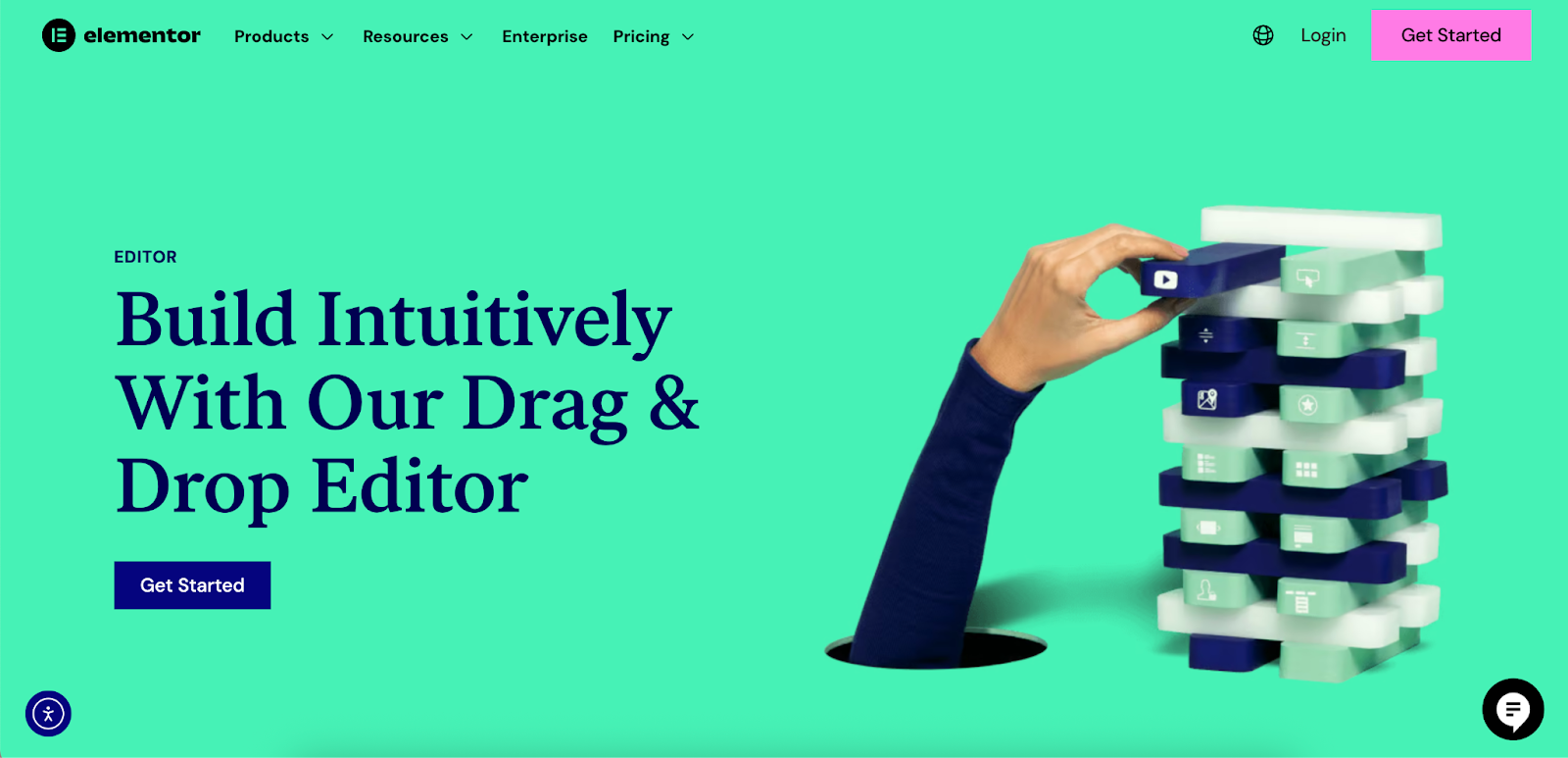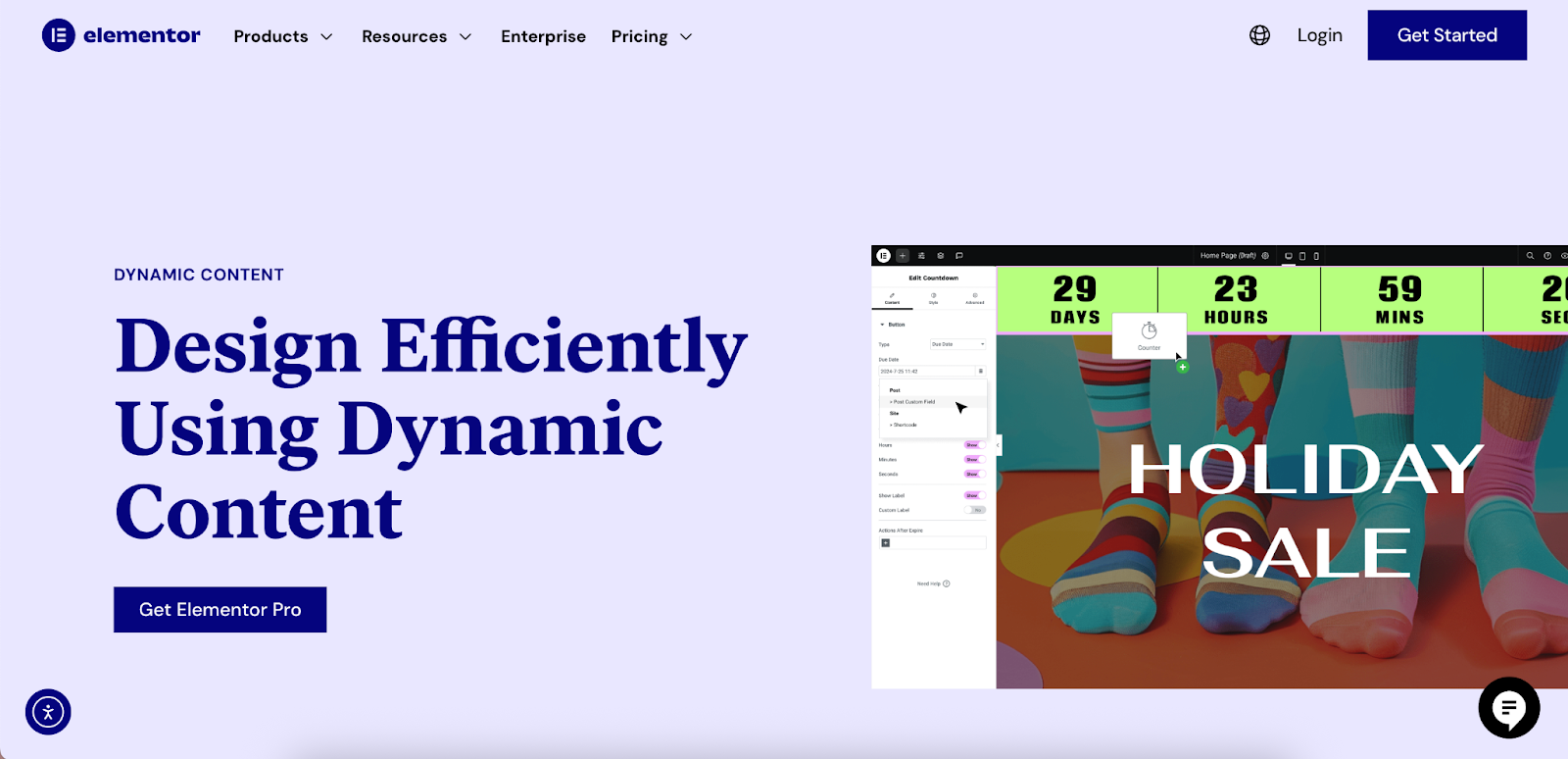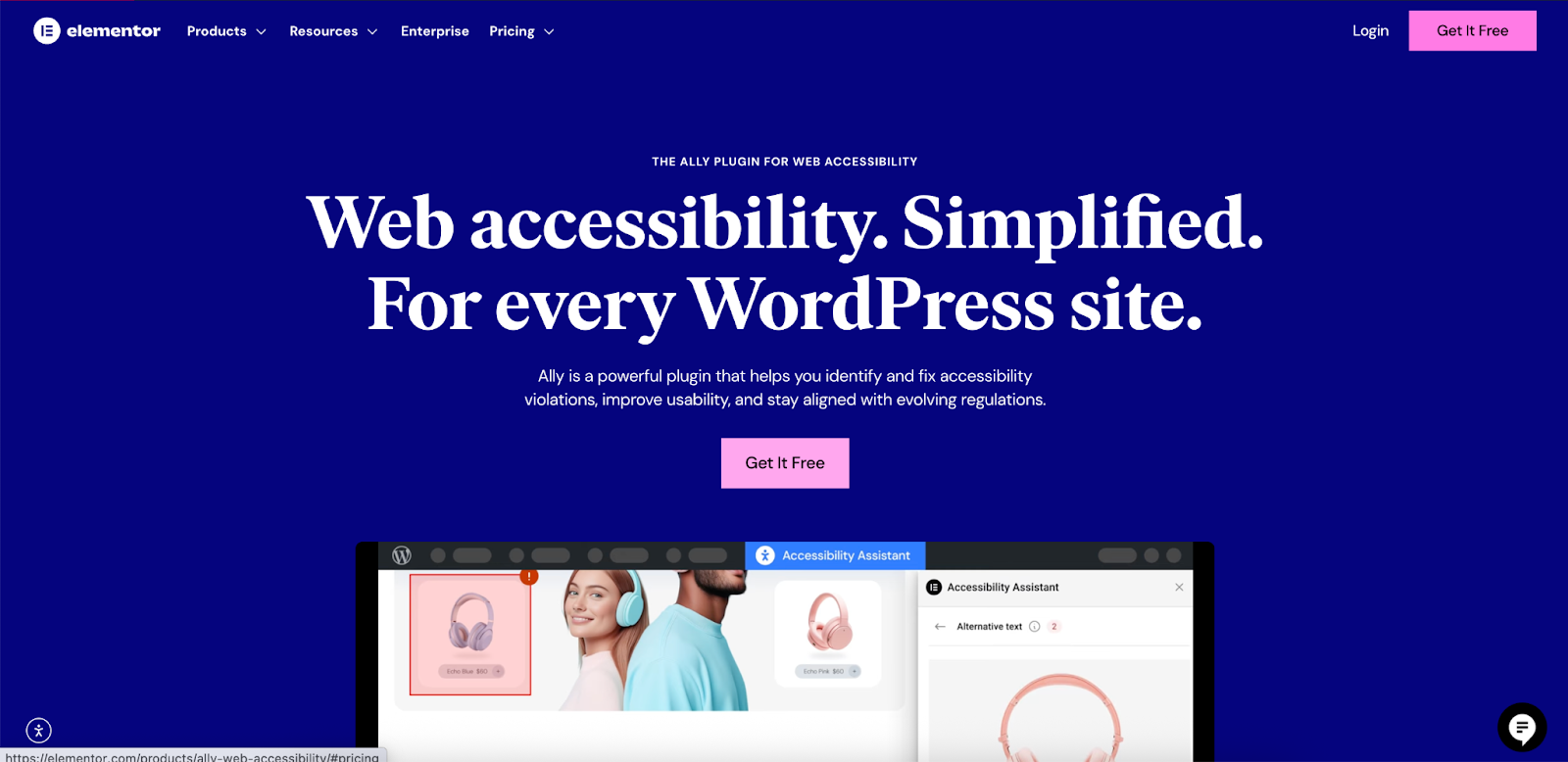Table of Contents
This guide explores the world of custom website design, from initial strategy to post-launch maintenance. We will cover the entire process, outline the key benefits, and examine the tools that help web creators build unique, high-performing websites. Whether you are a business owner weighing your options or a web professional refining your process, this article will provide the insights needed to build a digital presence that stands out.
What is Custom Website Design (and Why Does It Matter)?
Custom website design is the process of creating a website from the ground up, without relying on pre-built templates or themes. Every aspect—from the underlying code and site structure to the visual interface and user journey—is strategically planned and built to meet specific business objectives, reflect a unique brand identity, and serve the needs of a target audience.
Defining Custom Website Design
At its core, custom design is a goal-oriented process. Instead of fitting content into a pre-existing layout, the layout is built around the content and the desired user experience. This approach provides complete creative freedom and technical flexibility, allowing for the implementation of unique features, complex functionalities, and a visual language that is entirely your own. It’s a commitment to creating a digital asset that is not only visually appealing but also a powerful tool for business growth.
Custom Design vs. Website Templates: A Comparative Look
Choosing between a custom build and a template is one of the first major decisions in any website project. While templates can be effective for simple sites or tight budgets, understanding the trade-offs is crucial.
| Feature | Custom Website Design | Website Templates |
| Uniqueness | Entirely unique design tailored to the brand. No other website will look or feel the same. | Based on pre-built layouts used by many other websites, limiting brand differentiation. |
| Flexibility | Limitless. Features and functionality are built to specific requirements and can be highly specialized. | Confined to the features and layout options provided by the template developer. Customization is restricted. |
| Scalability | Built to grow with the business. The architecture can support future features, increased traffic, and evolving goals. | Can be difficult to scale. Adding new, complex functionality may require significant workarounds or be impossible. |
| SEO | Optimized from the ground up with clean, semantic code and a structure built for search engine visibility. | Code quality can be bloated or poorly structured, potentially hindering SEO performance. |
| Cost | Higher initial investment due to the time and expertise required for strategy, design, and development. | Lower upfront cost, often with a one-time purchase or subscription fee. |
| Time to Launch | Longer development timeline, as every phase is completed from scratch. | Faster to launch, as the design and foundational structure are already in place. |
The Core Business Benefits of a Custom Approach
Investing in a custom website yields significant advantages that directly impact a company’s bottom line and long-term success.
- Unique Brand Identity: A custom design ensures your website is a true reflection of your brand. In a crowded digital marketplace, a distinctive presence is invaluable for capturing audience attention and building brand recall.
- Optimized User Experience (UX): Custom projects are built around the user. The entire experience—from navigation and information architecture to interactive elements—is designed to be intuitive and engaging for your specific audience, leading to greater satisfaction and longer visit durations.
- Scalability and Future-Proofing: A custom website is an asset built for the long haul. Its architecture is designed to accommodate future growth, whether that means integrating a new eCommerce platform, adding a customer portal, or handling a surge in traffic.
- Enhanced SEO Potential: Custom development allows for SEO best practices to be woven into the fabric of the site. Clean code, logical site structure, and fast load times are all factors that search engines reward, leading to better organic visibility. The top organic result on Google receives ten times more clicks than the tenth position, so even small ranking improvements matter.
- Higher Conversion Rates: A website tailored to the user journey can guide visitors toward desired actions more effectively. By removing friction and optimizing every touchpoint, a custom design can lead to a significant increase in leads, sales, and other key conversions.
The Custom Website Design Process: A Step-by-Step Breakdown
A successful custom website project follows a structured, multi-phase process that ensures the final product is aligned with business goals and user expectations. Each phase builds upon the last, moving from abstract ideas to a fully functional digital product.
Phase 1: Discovery and Strategy
This initial phase is the most critical, as it lays the groundwork for the entire project. Rushing through discovery often leads to costly revisions later on.
Defining Goals and KPIs
Before a single pixel is designed, you must define what the website needs to accomplish. Are you aiming to generate leads, sell products, build brand awareness, or provide information? These goals should be specific, measurable, achievable, relevant, and time-bound (SMART). Key Performance Indicators (KPIs) like conversion rate, bounce rate, and session duration are established to measure success after launch.
Understanding the Target Audience
You cannot design an effective website without a deep understanding of its intended users. This involves creating user personas—fictional representations of your ideal customers based on research and data. These personas help answer key questions:
- What are their goals and motivations?
- What are their primary pain points or challenges?
- What is their level of technical proficiency?
- What information are they looking for?
Competitive Analysis
Analyzing competitor websites provides valuable insight into industry standards and opportunities for differentiation. This isn’t about copying others, but about understanding what works, what doesn’t, and where you can create a superior experience for your users.
Phase 2: Planning and Structure (Wireframing & Prototyping)
With a clear strategy in place, the next step is to plan the website’s structure and user flow. This is where the abstract concepts from the discovery phase begin to take concrete shape.
Creating a Sitemap
A sitemap is a hierarchical diagram of all the pages on the website, showing their relationship to one another. It serves as a blueprint for the site’s information architecture, ensuring that navigation is logical and users can find what they are looking for with ease.
Wireframing Key Pages
Wireframes are low-fidelity, black-and-white layouts that focus purely on structure, content hierarchy, and functionality. They act as a schematic for each page, mapping out where key elements like headers, navigation menus, content blocks, and forms will be placed. This step is about function, not aesthetics.
Prototyping and User Flow
A prototype takes wireframes a step further by making them interactive. By linking pages and adding basic functionality, you can simulate the user journey and test the flow of the website before any visual design or development work has begun. This allows for early feedback and iteration, saving significant time and resources.
For web creators looking to accelerate this foundational stage, modern tools are transforming the workflow. For instance,
Elementor’s Site Planner is an AI-powered tool designed for professional creators and agencies. It can generate a complete website wireframe, including page structures and AI-generated content, in minutes. This allows creators to present clients with a tangible site draft from day one, speeding up alignment and reducing the back-and-forth that often bogs down the early phases of a project.
Phase 3: Visual Design (UI) and Branding
Once the blueprint is approved, the visual design phase begins. This is where the brand’s identity is translated into a compelling user interface (UI) that engages and delights users.
Establishing a Visual Language
This involves defining the core visual elements that will be used across the site:
- Color Palette: Primary, secondary, and accent colors that align with the brand’s personality.
- Typography: Fonts for headings, body text, and other elements that ensure readability and convey the right tone.
- Imagery: The style of photography, illustration, or iconography that will be used.
- Spacing and Grid System: The underlying structure that ensures consistency and visual harmony.
Designing the User Interface (UI)
Using the wireframes as a guide, designers create high-fidelity mockups of the website. These are static but pixel-perfect representations of what the final site will look like. This is the stage where branding, color, and typography come together to create an aesthetically pleasing and emotionally resonant experience.
Phase 4: Development and Implementation
In the development phase, the static visual designs are transformed into a living, breathing website.
Choosing the Right Platform (CMS)
For most custom websites, a Content Management System (CMS) is essential for managing content. WordPress is the world’s most popular CMS, powering over 43% of all websites due to its flexibility and extensive ecosystem. Its open-source nature makes it an ideal foundation for custom development.
Frontend and Backend Development
- Frontend Development: This involves writing the code (HTML, CSS, JavaScript) that renders the visual design in the browser. The frontend developer ensures the site is responsive, interactive, and matches the approved mockups perfectly.
- Backend Development: This is the server-side of the website that powers its functionality. The backend developer builds the database, server logic, and integrations needed for features like user accounts, eCommerce, and form submissions.
This development phase is where web creators need tools that offer both efficiency and control. For those building on WordPress, the Elementor Editor serves as a professional drag-and-drop website builder that provides complete creative flexibility. It enables creators to build any type of website visually, with advanced design capabilities and a widget for nearly any purpose.

Features like the Theme Builder give users full control over site parts like headers and footers, while Dynamic Content allows them to build sophisticated, content-driven websites.

Furthermore, built-in tools like Elementor AI act as a creative assistant directly within the editor. This helps streamline the creation of content, custom code, and images, eliminating the need to switch between multiple applications and helping creators overcome the “blank canvas” problem.
Phase 5: Testing and Quality Assurance
Before the website goes live, it must undergo rigorous testing to ensure it is free of bugs and performs flawlessly for all users.
- Functionality Testing: Every link, button, form, and interactive element is tested to ensure it works as intended.
- Compatibility Testing: The site is tested across different web browsers (Chrome, Firefox, Safari) and operating systems to ensure a consistent experience.
- Performance Testing: The website’s loading speed and responsiveness are analyzed and optimized. This is critical, as slow-loading pages can severely impact user experience and SEO.
- Responsive Testing: The site is tested on a variety of devices, including desktops, tablets, and smartphones, to confirm that the layout adapts correctly to different screen sizes.
Phase 6: Launch and Post-Launch Maintenance
The launch is not the end of the project, but the beginning of its life on the web.
- Deployment: The website files are moved from a staging server to the live server, making the site accessible to the public.
- Monitoring and Analytics: The KPIs defined in the strategy phase are tracked using analytics tools. This data provides insights into user behavior and helps identify areas for improvement.
- Ongoing Maintenance: A website requires regular maintenance to remain secure and functional. This includes software updates, security scans, and regular backups.
Key Considerations for a Successful Custom Website Project
Beyond the core process, several overarching principles are essential for creating a high-quality custom website.
Performance and Page Speed
In today’s fast-paced digital environment, users expect websites to load almost instantly. A slow website frustrates visitors and can negatively impact search engine rankings.
Optimizing a website for performance involves several strategies, including compressing images, minifying code, and leveraging browser caching. The choice of hosting also plays a crucial role. A solution like
Elementor Hosting, for example, is a performance-focused cloud platform built on Google Cloud infrastructure. It is designed to handle traffic peaks without slowing down, ensuring a fast experience for every visitor. A performance-optimized builder complements this, as the Elementor Editor includes dedicated features to improve speed.

Responsive Design for All Devices
With more than half of all web traffic coming from mobile devices, a responsive, mobile-first design is essential. This means designing the mobile experience first and then adapting the layout for larger screens. This approach ensures that the core experience is optimized for the majority of users.
Tools with robust responsive controls are invaluable here. The Elementor Editor, for instance, allows web creators to customize the appearance of a website for any device, offering granular responsive settings for each breakpoint without needing to write any code.
Web Accessibility (a11y)
Web accessibility is the practice of designing and building websites that are usable by everyone, including people with disabilities. This is not only a matter of ethical and inclusive design but also a legal requirement in many regions. An accessible website benefits all users by being more readable, navigable, and predictable.
Addressing accessibility can feel overwhelming, but dedicated tools can simplify the process. Ally by Elementor, for example, is an accessibility plugin for WordPress designed to help creators make their websites more accessible. It provides visual tools and guided setups to address common accessibility issues, giving creators the clarity and control needed to make real progress.

Budgeting for a Custom Website
A custom website is a significant investment, with costs varying widely based on the project’s complexity, scope, and the team involved. Key factors influencing the budget include:
- The number of unique page designs.
- The complexity of custom features (e.g., eCommerce, user accounts).
- The extent of content creation and migration.
- Whether you are working with a large agency, a small studio, or a freelancer.
It is important to view this cost not as an expense, but as an investment in a critical business asset that will drive growth for years to come.
The Future of Custom Web Design
The field of web design is in a constant state of evolution. New technologies and changing user expectations continually shape the way we create digital experiences.
The Role of AI in Streamlining Workflows
Artificial intelligence is rapidly becoming a powerful assistant for web creators. AI tools are not replacing human creativity but are augmenting it, automating repetitive tasks and accelerating the design and development process. From generating initial design concepts and writing copy to producing code snippets, AI is helping professionals work more efficiently.
Platforms are increasingly integrating these capabilities. Elementor AI and Site Planner, for example, are designed to fit into a professional workflow, helping creators produce better and more scalable work with less friction. These tools help launch more sites faster by handling repetitive setup work, freeing up professionals to focus on strategy, creativity, and client relationships.
The Continued Importance of Human-Centered Design
While technology will continue to advance, the core principles of successful web design will remain the same. A deep understanding of human psychology, empathy for the user, and a commitment to solving real-world problems will always be the foundation of a great website. The most effective digital experiences are those that are not just technologically advanced, but are also intuitive, accessible, and genuinely helpful to the people using them.
Conclusion
Custom website design is a strategic imperative for any business serious about creating a distinctive and effective online presence. It is a collaborative and detailed process that moves from deep strategic thinking to meticulous execution, resulting in a digital asset that is perfectly aligned with a brand’s vision and its users’ needs. While the investment is greater than off-the-rack solutions, the returns in brand equity, user engagement, and conversions are unparalleled.
By embracing a structured process and leveraging modern tools that offer flexibility and control, web creators can build unique, high-performing websites that not only meet the demands of today but are also built to scale for the future. In the end, a custom website is the ultimate expression of a brand’s commitment to quality, user-centricity, and digital excellence.
Looking for fresh content?
By entering your email, you agree to receive Elementor emails, including marketing emails,
and agree to our Terms & Conditions and Privacy Policy.







